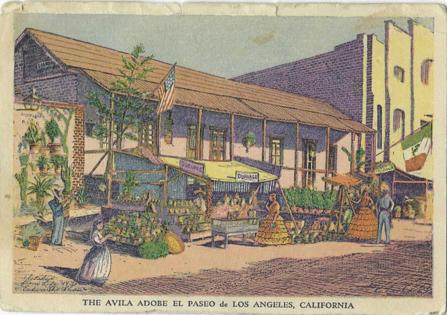1 million Mexican Americans were deported a century ago. A new LA audio tour explores this 'hidden' history
Published in Lifestyles
LOS ANGELES -- Olvera Street, adorned with brightly colored papel picado (perforated paper) and teeming with lively puestos (food stalls), did not always look as vibrant as it does today. While the historic pedestrian street and El Pueblo de Los Angeles Historical Monument attract about 2 million tourists annually, many don't know how the area came to be or that it was the site of the first public immigration raid in Los Angeles.
A new self-guided audio tour, presented by the California Migration Museum, explores both the origin of this storied area and the "hidden" history of the La Placita raid that ultimately led to the deportation of as many as 1.8 million Mexican Americans across the country in the 1930s.
The immersive experience, titled "Ni de Aquí, Ni de Allá" — meaning neither from here, nor from there — is narrated by Karla Estrada, an activist and advocate for immigrant justice. The founder and director of the museum, Katy Long, contributes to the story's narration as well. The tour, which is also available as an interactive, 360-degree YouTube video, is part of the museum's "Migrant Footsteps" series, which offers similar free audio walks in the San Francisco area.
The project took nine months to develop and was funded in part by a grant from the National Endowment for the Humanities. The museum has four walking tours based in San Francisco; this new tour is the first to trace the rich migration history of L.A..
In an interview with The Times, Long said the museum wanted its first L.A. experience to trace the history of La Placita and Olvera Street because it "made sense on so many levels."
"It is the space where Los Angeles was founded," Long said. "That area has this long, layered history going back to the Native Americans, who were there before the Pobladores arrived, and then you have these layers upon layers of different migration histories that all center and circle around La Placita."
Long said the California Migration Museum has plans to create more tours in L.A. The "short list" of ideas and topics they'd like to explore in future experiences include California's Proposition 187, the Great Migration and the history of Jewish Los Angeles.
A century ago, the subset of downtown L.A. where La Placita and Olvera Street exist today was home to Mexican, Chinese and Italian immigrants. The plaza became known for "radical political rallies" by the 1920s. Because it was such an active gathering spot, government officials launched a highly visible immigration raid at the plaza in February 1931, Estrada says in the audio tour.
The tour's narration details how the public became more hostile toward immigrants during the beginning of the Great Depression. In L.A., officials made plans to expel immigrants to create job openings for U.S. citizens, and the La Placita raid was one of the first steps of that effort.
The audio features reenactments of the scene of the 1931 raid, with voice actors depicting police and immigration officials demanding immigration papers from the 400 Mexicans who were enjoying music and food at the plaza that day. Estrada says prior to 1917, there were significantly fewer checks at borders and less restrictions on immigration, so many of the people there did not have documentation.
...continued
©2024 Los Angeles Times. Visit at latimes.com. Distributed by Tribune Content Agency, LLC.







Comments